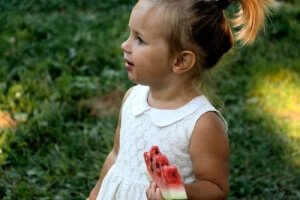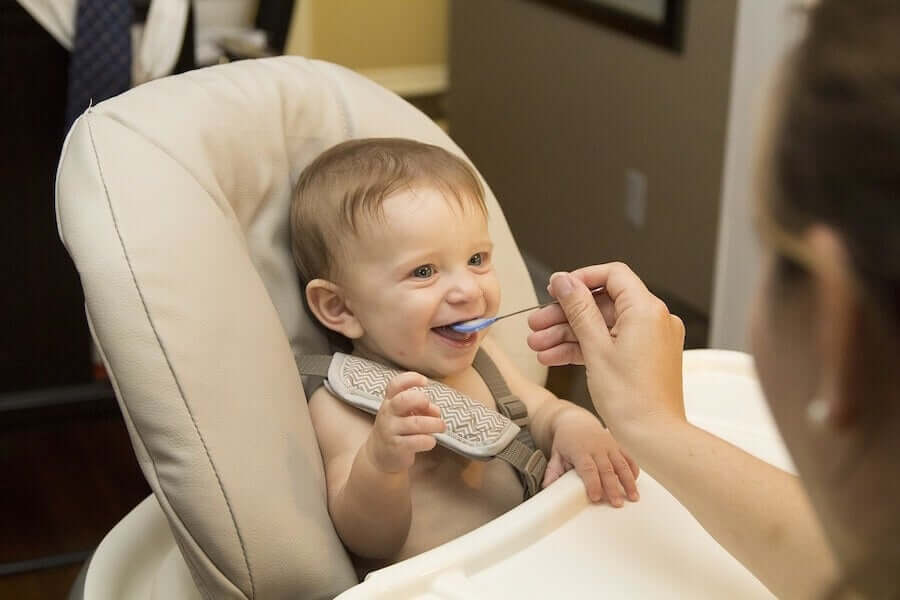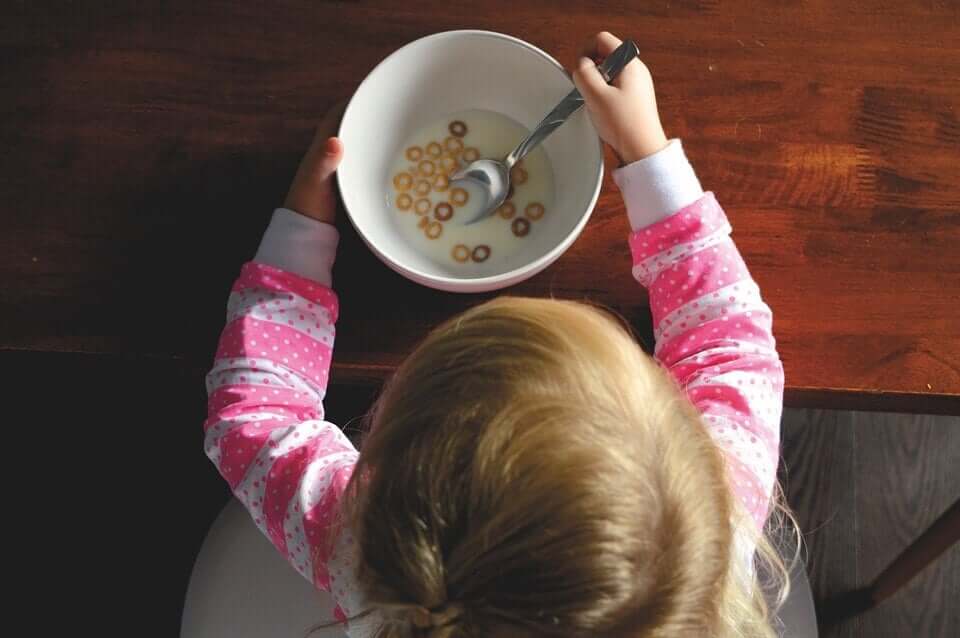How Much Should Children Eat, According to Age

How much should children eat according to their age? This is a common question for parents to ask themselves.
Young children need to consume between 1,000 and 1,400 calories per day. This is because they’re in the midst of a transition process – especially between the ages of 12 and 24 months. During this time period, children start to eat more solid foods and are more open to new flavors and textures.
The period between 12 and 24 months of age
This is the time in which children start to obtain their calories from a variety of foods – not just breast milk or formula. You should be careful not to give your little one too much food or serve adult-sized portions. Your child will likely end up leaving a lot of food behind and eating just what his or her body needs.
It’s very important that you know how much children should eat according to their age. Of course, a child’s physical activity and other particular needs also play a role in nutritional needs.
You should be as attentive as possible when it comes to the needs of your child. No one knows better than you if there’s reason for concern or if your child needs to see a pediatrician.
How much food does your child need?
Keep in mind that the portion sizes that appear on packaging aren’t always appropriate for children. Portion sizes vary according to a child’s particular caloric needs.
You should be aware that in restaurants, portion sizes often vary. Don’t be shy when it comes to asking about portion sizes or requesting nutritional information before ordering. When it comes to your child’s health, no one should judge you.
When it comes to how many calories children need, there’s no exact answer. Each child burns calories according to his or her size, metabolism and level of physical activity.

As a general guideline, children should consume 1,000 calories per day in their first year of life. Then, they should consume an additional 100 daily calories each year thereafter, until they reach puberty.
The following list can give you an idea of how much children should eat. It will also give you a better idea of what types of foods are necessary in order to meet their nutritional needs. Of course, don’t forget to discuss it with your pediatrician.
How much should children eat: 1-10 years of age
Grains: 6-11 portions per day
Examples of grain portion sizes for children between the ages of 1 and 3:
- 1/2 slice of bread
- 1/4 cup of rice, hot cereal or pasta
- 1/4 cup of dry cereal
- 2-3 crackers
For children between the ages of 4 and 6:
- 1/2 slice of bread
- 1/3 cup of rice, hot cereal or pasta
- 1/2 cup of dry cereal
- 3-4 crackers
Finally, for children between the ages of 7 and 10:
- 1 slice of bread
- 1/2 cup of rice, hot cereal or pasta
- 3/4 cups of dry cereal
- 4-5 crackers

Vegetables: 2-3 portions per day
- Portion size for children ages 1 to 3: 1/4 cooked vegetables
- For children ages 4 to 6: 1/4 cup cooked vegetables, 1/2 cup salad
- For children ages 7 to 10: 1/2 cup cooked vegetables, 1 cup of salad
Fruit: 2-3 portions per day
The following are examples of portion sizes for children ages 1 to 3 years:
- 1/4 cup canned or frozen fruit
- 1/2 of an apple, banana, pear, etc.
- 1/3 cup of 100% fruit juice (freshly squeezed is best)
For children ages 4 to 6:
- 1/4 cup frozen or canned fruit
- 1/2 of an apple, banana, pear, etc.
- 1/3 cup of 100% fruit juice
For children ages 7 to 10 years:
- 1/3 cup frozen or canned fruit
- 1 apple, banana, pear etc
- 1/2 cup of 100% fruit juice
Meats and legumes: 2 portions per day
Portion sizes of meats and legumes for children ages 1 to 3 years:
- 1 ounce of beef, fish, chicken or tofu
- 1/4 cup of cooked legumes
- 1/2 egg
For children ages 4 to 6 years:
- 1 ounce of beef, fish, chicken or tofu
- 1/3 cup of cooked legumes
- 1 egg
For children between the ages of 7 and 10 years:
- 2-3 ounces of beef, fish, chicken or tofu
- 1/2 cup of legumes
- 1 to 2 egg
Dairy: 2-3 portions per day
Portion sizes for children between the ages of 1 and 3 are as follows:
- 1/2 cup of milk
- 1/2 ounce of cheese
- 1/3 cup of yogurt
For children between 4 and 6 years of age:
- 1/2 cup of milk
- 1 ounce of cheese
- 1/2 cup of yogurt
For children between the ages of 7 and 10 ten:
- 1 cup of milk
- 1 ounce of cheese
- 1 cup of yogurt
The best thing you can do when it comes to your child’s nutrition is trust your own judgment and your child’s lead. Every individual can tell when he or she is satisfied and is receiving enough nourishment.
So you mustn’t worry if you don’t meet these average nutritional guidelines every day. Try to include a wide variety of nutrients in your child’s diet.
All cited sources were thoroughly reviewed by our team to ensure their quality, reliability, currency, and validity. The bibliography of this article was considered reliable and of academic or scientific accuracy.
- Dirección Nacional de Maternidad e Infancia; Ministerio de Salud de la Nación Argentina (2009) Guías alimentarias para la población infantil. Orientaciones para padres y cuidadores. Argentina; 50 págs. http://www.msal.gob.ar/images/stories/ryc/graficos/0000000562cnt-guias-alimentarias-familia.pdf
- FAO (Organización de las Naciones Unidas para la alimentación y la agricultura) La alimentación de los niños de más de seis meses. Notas sobre nutrición. http://www.fao.org/docrep/pdf/008/y5740s/y5740s11.pdf
This text is provided for informational purposes only and does not replace consultation with a professional. If in doubt, consult your specialist.








